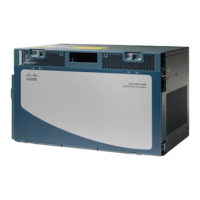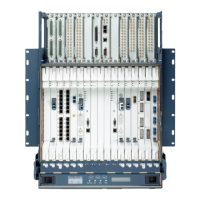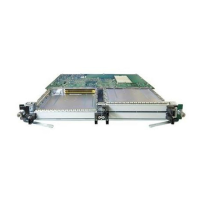10-16
Cisco ONS 15454 SONET/SDH ML-Series Multilayer Ethernet Card Software Feature and Configuration Guide, R4.0
78-15224-02
Chapter 10 Configuring Networking Protocols
Configuring IP Routing
Beginning in privileged EXEC mode, follow these steps to configure area parameters:
Use the no form of these commands to remove the configured parameter value or to return to the
default value.
Command Purpose
Step 1
Router# configure terminal
Enters global configuration mode.
Step 2
Router(config)#router ospf
process-id
Enables OSPF routing, and enters router configuration
mode.
Step 3
Router(config)# area
area-id
authentication
(Optional) Allows password-based protection against
unauthorized access to the identified area. The identifier
can be either a decimal value or an IP address.
Step 4
Router(config)# area
area-id
authentication message-digest
(Optional) Enables MD5 authentication on the area.
Step 5
Router(config)# area
area-id
stub
[no-summary]
(Optional) Defines an area as a stub area. The no-summary
keyword prevents an ABR from sending summary link
advertisements into the stub area.
Step 6
Router(config)# area
area-id
nssa
{no-redistribution|default-informati
on-originate|no-summary}
(Optional) Defines an area as a not-so-stubby-area. Every
router within the same area must agree that the area is
NSSA. Select one of these keywords:
• no-redistribution—Select when the router is an
NSSA ABR and you want the redistribute command
to import routes into normal areas, but not into the
NSSA.
• default-information-originate—Select on an ABR to
allow importing type 7 LSAs into the NSSA.
• no-redistribution—Select to not send summary LSAs
into the NSSA.
Step 7
Router(config)# area
area-id
range
address-mask
(Optional) Specifies an address range for which a single
route is advertised. Use this command only with area
border routers.
Step 8
Router(config)# end
Returns to privileged EXEC mode.
Step 9
Router# show ip ospf [
process-id
]
show ip ospf [
process-id
[
area-id
]]
database
Displays information about the OSPF routing process in
general or for a specific process ID to verify configuration.
Displays lists of information related to the OSPF database
for a specific router.
Step 10
Router# copy running-config
startup-config
(Optional) Saves your entries in the configuration file.

